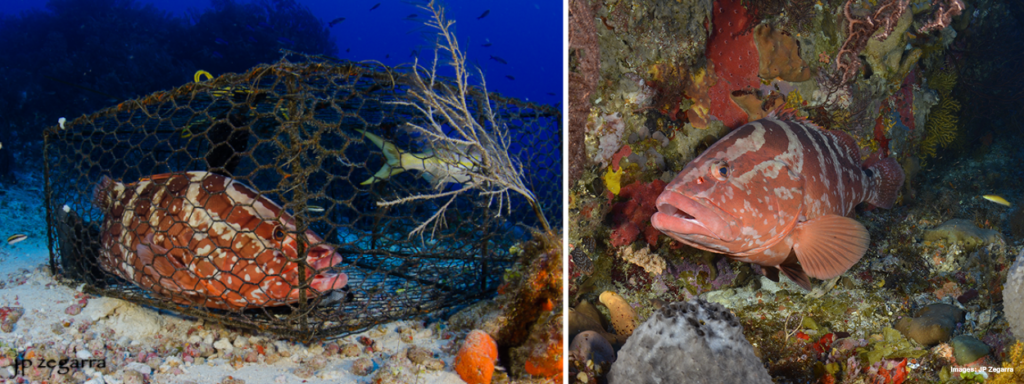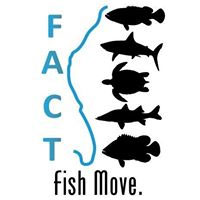
Project Overview
The Nassau grouper used to be common on Caribbean coral reefs and was once considered the most commercially important reef fish species in the region. It is now designated as threatened in the US, and as endangered by the International Union for Conservation of Nature. During spawning, Nassau grouper aggregate in very high densities. This provides researchers a window to assess spawning numbers, fish sizes, behavior, and habitat use in deep water at the Bajo de Sico seamount off of Puerto Rico. A team of technical divers from the University of Puerto Rico developed a unique approach to implanting acoustic tags into Nassau grouper underwater rather than at the surface. The team used closed-circuit rebreathers in deep water (i.e. greater than 100 feet) where they surgically implanted acoustic transmitters in 29 groupers. Surgically implanting the tags at depth reduced the stress and physiological impairment to the grouper and resulted in 100% survival rate. The use of rebreathers allowed divers to be less of an intrusion to the grouper during spawning season, allowing the divers to observe grouper behavior quietly. A rebreather circulates breathing gas through a CO2 scrubber, instead of the diver exhaling gas into the water such as traditional SCUBA systems. Rebreathers are highly efficient, allowing for longer duration dives and are silent and bubble-free.
Why this Matters
Most of the known Nassau grouper spawning aggregations have decreased in numbers or have disappeared. Spawning aggregations are a critical time for reproduction and spawning fish are vulnerable to overfishing. The tags that were surgically implanted allowed the research team to track the grouper movements and also correlated those movements with courtship sounds. Understanding the courtship patterns helps inform management actions such as shifting or increasing the window of protection on the Bajo de Sico seamount based on the timing of spawning season, with hopes of recovering the populations of Nassau grouper within the U.S. Caribbean.
Lead Organizations
Partners
- University of Puerto Rico, Mayagüez Campus, Department of Marine Sciences
- Departamento de Recursos Naturales y Ambientales de Puerto Rico
- NOAA National Marine Fisheries Service
Supported by
Project Status
- Complete (2013-2018)
Contact
Resources & Publications
- In situ Tagging of Nassau Grouper Epinephelus striatus Using Closed-Circuit Rebreathers at a Spawning Aggregation in Puerto Rico. 2015. Tuohy E, Nemeth MI, Bejarano I, Schaerer MT, Appeldoorn RS. Marine Technology Society Journal. 49(1):115-123.
- Sound Production associated with Reproductive Behavior of Nassau Grouper Epinephelus striatus at Spawning Aggregations. 2012. Schärer MT, Rowell TJ, Nemeth MI, Appeldoorn RS. Endangered Species Research, 19(1):29-38.
- In situ Tagging of Nassau Grouper (video)
- Sounds of the Nassau Grouper (audio)
- This American Land: Seamount of Life (video)
